No matter whether you prefer a pure beach holiday or wandering around monuments from the Roman times, this northernmost African country has it all. It’s time to plan your holiday in Tunisia!
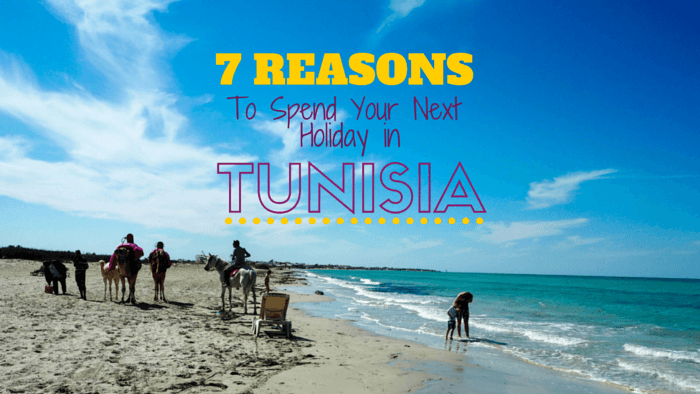
From fascinating sandy beaches drenched in sunshine to grand ancient ruins and the vast, rolling dunes of the Sahara, Tunisia encapsulates everything that’s enticing about North Africa. Located just a stone’s throw from Europe, Tunisia sits on the Mediterranean coast, midway between the Atlantic Ocean and the Nile Delta.
Before I even knew I would ever travel to Tunisia, I had met several people who loved to travel to this region. They kept speaking over and over again about Djerba. It sounded pretty much like a tropical paradise and a must-go. By coincidence, my first ever trip to Tunisia was about to kick off from nowhere other than…Djerba. I was so thrilled!
In the end, I got to see so much more. With a 10-day packed schedule, I travelled about 600 kilometers all the way up to Tunis, the capital of Tunisia.
A Thousand kilometers of stunning beaches
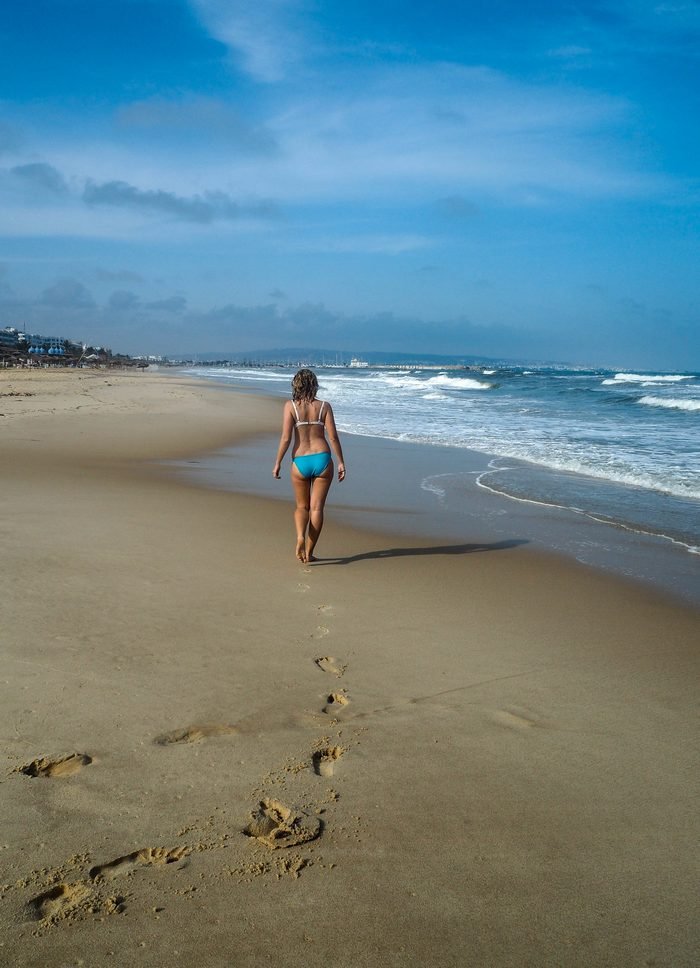
Most sun-seekers head to Tunisia to enjoy its sea and gorgeous Mediterranean beaches. They never get really crowded – there is enough golden sand for everyone. Tunisia’s coastline is 1,148 kilometers long!
The prettiest beaches are located on Cap Bon peninsula. You can also enjoy some great swimming in Djerba (two famous beaches are Sidi Mahrez and Seguia). Tunisian beaches are wide and surprisingly long. The beach north of Sousse is about 35 km long, and near Nabeul even up to 50 km (!)
The stay in the seaside resorts is really relaxing. Most of hotels are located further away from the city and feature private beach, for the guests only.
There are two resorts that I really enjoyed: one is Yadis Djerba thalasso, Golf & Spa Hotel located directly at the coast of Djerba. The second is Golden Yasmine Mehari Hammamet, with stunning beach just a few steps away.
Towns brimming with historical charm
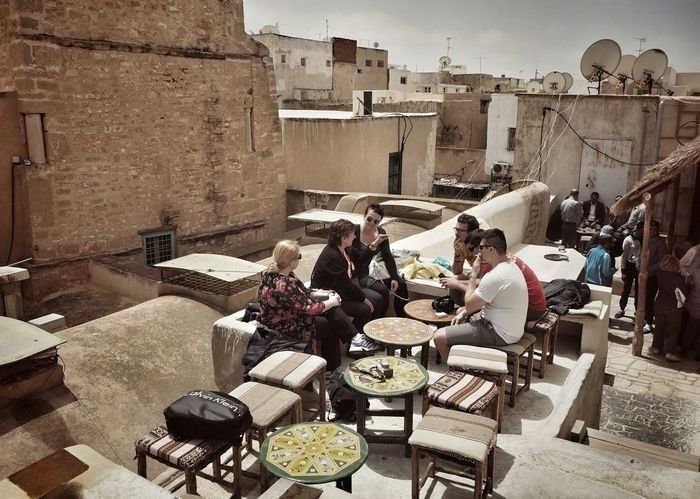
Tunisia is more than a typical seaside destination. If you feel terrified about staying in a hotel which is surrounded by nothing but never-ending desert, you are safe in Tunisia. Here cities worth exploring are never too far away.
On my trip I explored Houmt Souk, Souk, Sfax, Hammament and Tunis. I will focus on those specific cities in separate article that is coming soon.
Each bigger town features a medina, or historic quarter that once was surrounded by city walls. Have a stroll in the labyrinth of narrow lanes – it’s an authentic experience.
Tunisian people are friendly and kind. They don’t hesitate to offer advice or help everywhere you go. You never see then being in a rush – there always seems to be enough time for everything The official language is Arabic, but most of locals are bilingual in Arabic and French. English is less common, but for me it always worked, too.
Practical note: When it comes to souvenirs, I recommend the products made of olive wood – mainly decorations and kitchenware. I bought some ladles for just 7 dinars (3 USD).
Experience the Sahara, world largest desert
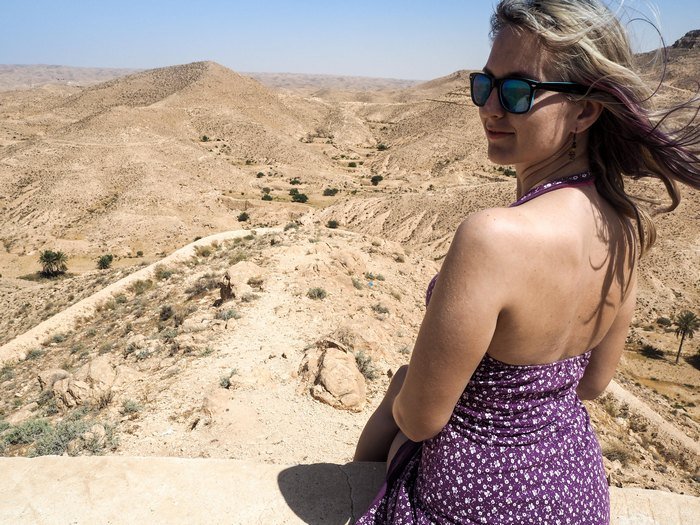
The enchanting sands of the Sahara stretch over ten countries including the south of Tunisia. And I can tell you – it’s an amazing place and definitely the highlight of my holiday in Tunisia. I am considering to go back one day to experience it overnight. There must be plenty of stars out there!
The easiest destination for organizing a Sahara trip is Djerba. From there you have two choices – to visit the west dotted with salt lakes, or head to get a glimpse of Sahara Oases.
One interesting stop is Matmata, a small town known for its underground cave structures (known as trylodytes) that used to host the local Berber population. No one lives there anymore, but it’s possible to visit this architectonic wonder.
Mediterranean climate with lots of sunshine
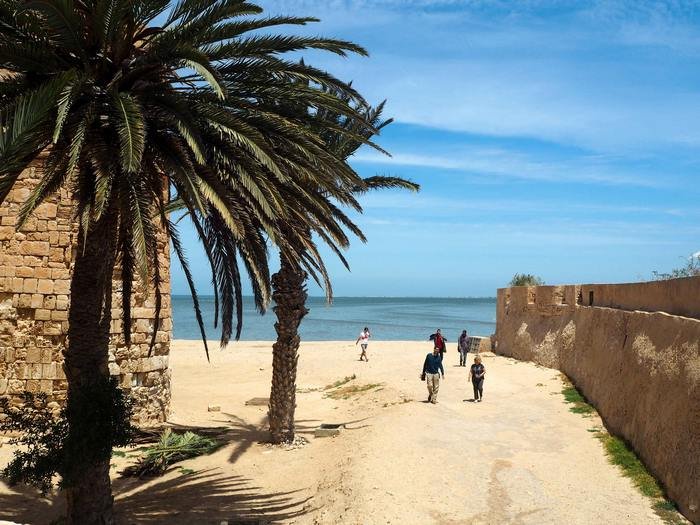
Tunisia offers sunshine throughout the year. The coast is dotted by resorts and is under the influence of pleasant Mediterranean climate characterized by warm and sunny days.
The swimming season runs from May until October. The sea gets as warm as 28°C. If you don’t prefer hot weather, try to avoid July and August, the warmest months.
The best time for a seaside holiday is September and October when the weather is pleasant and sea still warm. If you are heading to Tunisia for sightseeing, then April and May are perfect.
Jaw dropping archeological sites
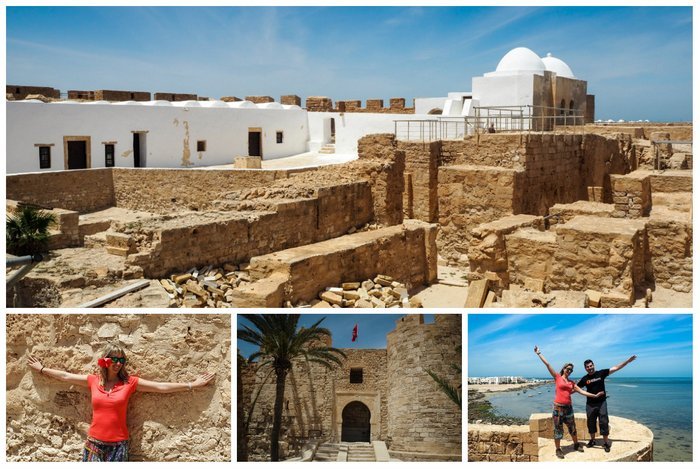
Tunisia is a country with a long and rich history. A wide number of archeological sites demonstrate the historical role of Tunisia – an important crossroads of civilizations.
Tunisia was found by Phoenician traders who eventually settled here. The colony developed into the center of an empire dominating the Mediterranean Sea. Although not too much is left from the original Cartague nowadays, history lovers will still enjoy its ruins including roman baths, a cathedral, and an amphitheater.
The country hosts the most impressive Roman ruins outside Italy. Head to the northeast of the country to observe remains of Roman history in the cities of Dougga, Bulla Regea and Chemtou. Don’t miss the UNESCO listed amphitheater El Jem, build around 238 AD. With an estimated capacity of 35.000 spectators it is world’s third-largest amphitheater.
You can move around the country easily
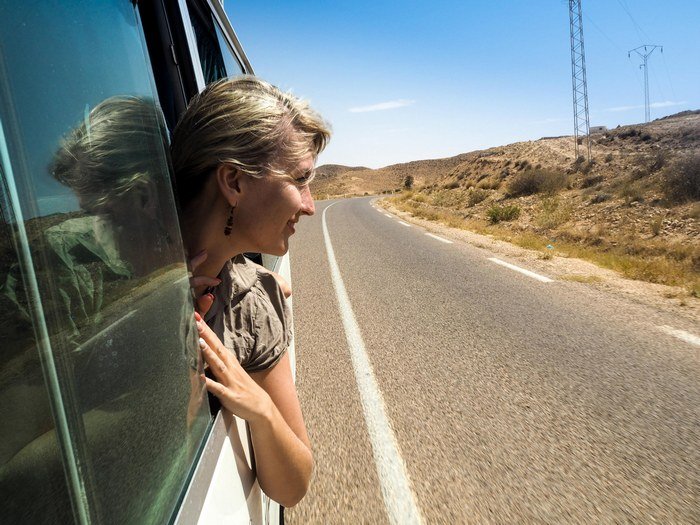
Tunisia has much to offer and it would be a pity to spend a holiday in Tunisia all in one place. The roads are in quite good conditions and there are several ways to move around independently.
Transportation options:
Car: around USD 55/a day. Rentals are
easy to find. Higher price at the airport.
Long distance bus: cheapest form of transport. Schedules don’t exist, but busses come and go regularly.
Shared taxi (louage): a taxi for eight people. There are regular routes, but they only leave once full.
Train: smart option for long journeys. Comfortable trains run from Tunis south to Sousse, Sfax and Monastir.
International cuisine with amazing seafood
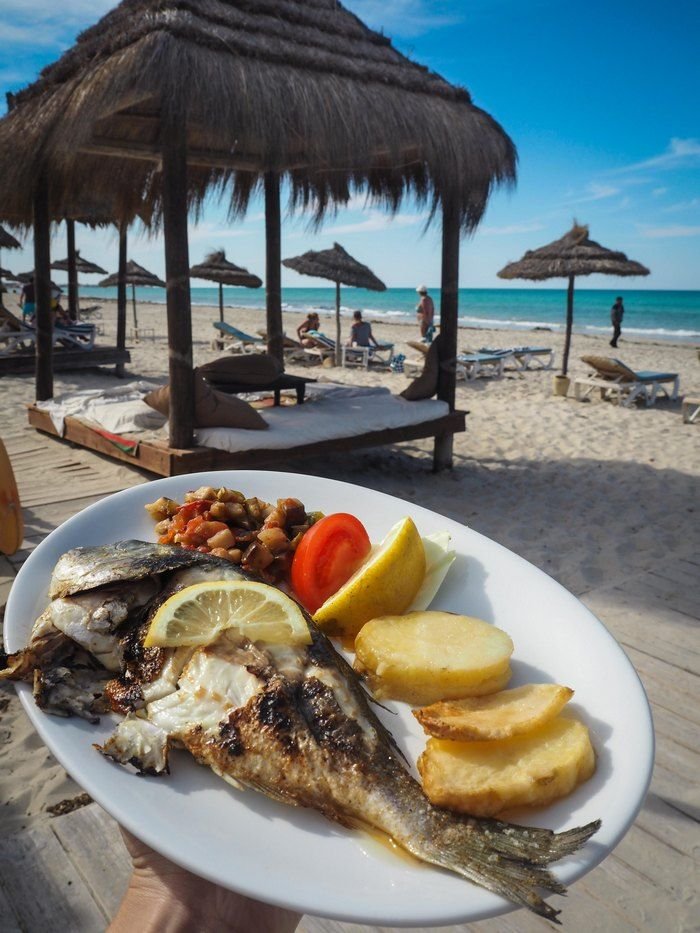
The food in Tunisia is quite awesome. And if you are into seafood, you will enjoy it twice as much. They’ve got the best shrimp I have ever eaten. The local specialty is grilled fish that they call “poisson complet’. Yummy as well!
Tunisian cuisine offers a variety of tastes. It combines elements of Turkish, French and Mediterranean cuisine. They don’t serve pork since it’s a Muslim country, but you will find that the mutton is a great alternative. Fruit, vegetable and olives are present in most meals.
The staple dish is couscous, or granules of semolina, usually served with a stew spooned on top. Couscous can be served warm or cold and it tastes differently in each restaurant.
Food you should try
Brik – very crispy thin pastry with a whole egg, parsley, onions and sometimes meat. Very tasty as an inexpensive starter.
Salade Tunisienne– Sala lettuce, green pepper, tomato, onions, olives, radish all finely chopped and mixed with tuna.
Harissa–very spicy chili paste (sometimes made more mild with carrots or yogurt), served with bread as a starter at almost every meal.
Merguez–small spicy sausages made from Mutton meat
HAVE YOU BEEN TO TUNISIA? WOULD YOU LIKE TO VISIT NORTH AFRICA?
Tunisia is little less explored that some other parts of North Africa – especially Egypt. I wonder whether you have been to the region and what your experience like.
Thanks for reading my article!
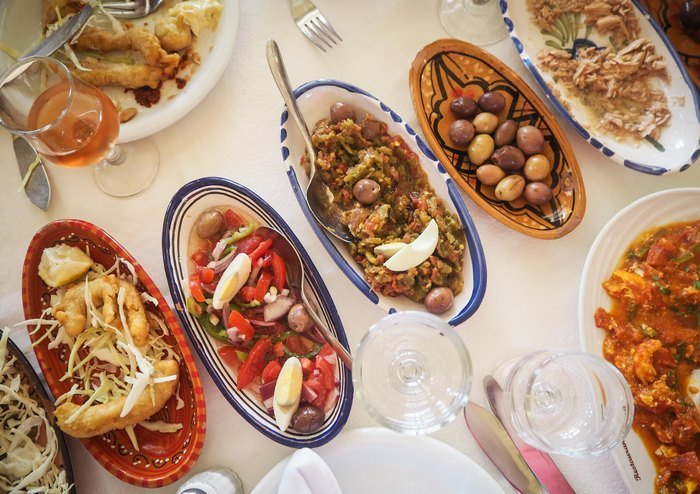
Hi! I am a robot. I just upvoted you! I found similar content that readers might be interested in:
https://www.veronikasadventure.com/holiday-in-tunisia/